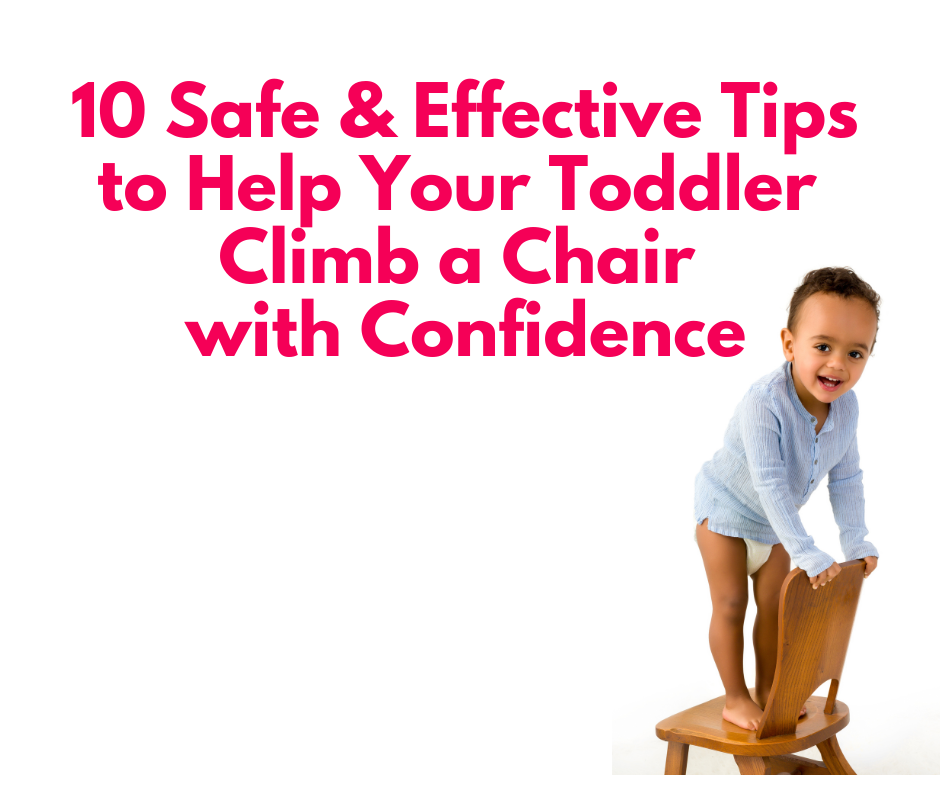
This article offers 10 practical and safe tips to help parents assist their toddlers in learning to climb a chair with confidence. From selecting a sturdy chair to supervising your child’s movements, this guide provides valuable insights for parents who want to help their little ones develop important motor skills in a safe and secure way.
Read on for expert advice on teaching your toddler how to climb a chair safely and confidently.
As toddlers grow and develop, they naturally want to explore their surroundings and test their limits. Climbing is an essential skill that can help them build strength, coordination, and confidence. However, as a parent, it’s important to ensure that your child climbs safely and securely. Chairs are a common object that toddlers may want to climb, but they can be unstable and potentially dangerous. If you’re looking for tips on how to help your toddler climb a chair with confidence, you’ve come to the right place.
In this article, we’ll share 10 safe and effective strategies to help your little one climb a chair safely and confidently.
10 safe and effective strategies to help your little one climb a chair safely and confidently
Choose a sturdy and safe chair:
The first step in teaching your toddler how to climb a chair is selecting the right one. It’s important to choose a chair that is sturdy, has a wide base, and is not too tall for your child’s size. Also, ensure that the chair has no sharp edges or corners that could injure your toddler.
Also read – Best high chair for babies in India
Demonstrate and encourage proper climbing technique
As your toddler observes and imitates your movements, make sure to demonstrate proper climbing technique. Encourage your child to climb step by step, placing one foot on the chair at a time, and using their hands to support themselves.
Supervise your child’s movements
Climbing a chair can be risky for a young child, so it’s crucial to keep a close eye on your little one. Ensure that you’re nearby and attentive to any signs of instability or imbalance.
Provide a safe landing spot:
Falls can be part of the learning process, but it’s important to provide a safe landing spot for your child. Place a soft mat or cushion on the ground beneath the chair to cushion any falls.
Also read – Best play mat for babies in India
Encourage independence and confidence
As your child becomes more skilled at climbing the chair, encourage them to climb independently, but continue to supervise their movements. This helps build their confidence and self-esteem.
Use positive reinforcement
Praise and positive reinforcement can go a long way in helping your toddler feel confident about their climbing skills. Celebrate their successes, and provide encouragement when they face challenges.
Avoid distractions
It’s important to create a distraction-free environment to minimize the risk of accidents. Turn off the TV or any other distractions that might divert your child’s attention from the task at hand.
Gradually increase the challenge
Once your child has mastered climbing a low chair, you can gradually increase the challenge by using a higher chair. This helps your child develop their balance and coordination gradually.
Stay calm and patient
As with any skill, learning to climb a chair takes time, patience, and practice. Stay calm and patient with your child as they work on developing their skills, and avoid getting frustrated or upset.
Teach your child to get down safely
Climbing up a chair is only half the battle – it’s equally important to teach your child how to get down safely. Encourage your child to climb down one step at a time, using their hands to support themselves and their feet to feel for the ground. Emphasize the importance of not jumping or leaping down from the chair, which can be dangerous and lead to injury. By teaching your child safe descent techniques, you’re helping them develop a well-rounded set of climbing skills that they can use in a variety of situations.
teaching your toddler how to climb a chair is an important milestone that requires patience, supervision, and careful attention to safety. By following these 10 practical and safe tips, you can help your child develop the skills, confidence, and coordination they need to climb a chair with ease and security. Remember, always prioritize safety and make sure your child is supervised at all times.
How do I know if my child is ready to climb a chair?
It’s important to remember that all children develop at their own pace. However, as a general rule, toddlers are typically ready to climb a chair around 18-24 months of age. If your child is showing an interest in climbing and has developed some basic coordination and balance, they may be ready to give it a try.
How can I keep my child safe while climbing a chair?
Safety is the most important consideration when teaching your child to climb a chair. Always choose a sturdy, stable chair with a wide base, supervise your child’s movements, and provide a soft landing spot in case of falls. It’s also a good idea to minimize distractions, stay calm and patient, and provide positive reinforcement to encourage your child’s progress.
What if my child is too scared to climb a chair?
It’s common for children to experience fear or anxiety when trying new things, especially if they involve heights or instability. Encourage your child to take small steps and climb gradually, starting with a low chair and working up to taller chairs. Use positive reinforcement to build their confidence, and offer plenty of praise and support for their efforts.
My child keeps trying to climb on chairs without my supervision. What can I do?
Climbing on chairs without supervision can be dangerous, so it’s important to discourage this behavior. Keep chairs out of reach when they’re not in use, and consider using baby gates or other barriers to restrict access to areas with chairs. It’s also important to communicate clearly with your child about the dangers of climbing on chairs, and why it’s important to only climb with adult supervision.
Can climbing a chair lead to other forms of climbing, like climbing on furniture or walls?
It’s possible that climbing a chair could lead to other forms of climbing, especially if your child is a natural explorer. While climbing can be a great way for children to develop their coordination and strength, it’s important to set clear boundaries and guidelines to help keep them safe. Encourage your child to only climb with adult supervision, and make sure they understand the dangers of climbing on unstable or unsafe surfaces.
In conclusion, teaching your toddler how to climb a chair can be a fun and rewarding activity that helps build their physical skills and confidence. By following the practical and safe tips we’ve outlined, you can help your child develop a well-rounded set of climbing skills that they can use in a variety of situations. Remember to prioritize safety, provide positive reinforcement, and stay patient and encouraging throughout the process.
Don’t forget to share your own tips and experiences with us in the comments below. And if you found this guide helpful, be sure to share it with other parents who could use some guidance on helping their toddlers climb a chair safely and confidently.







